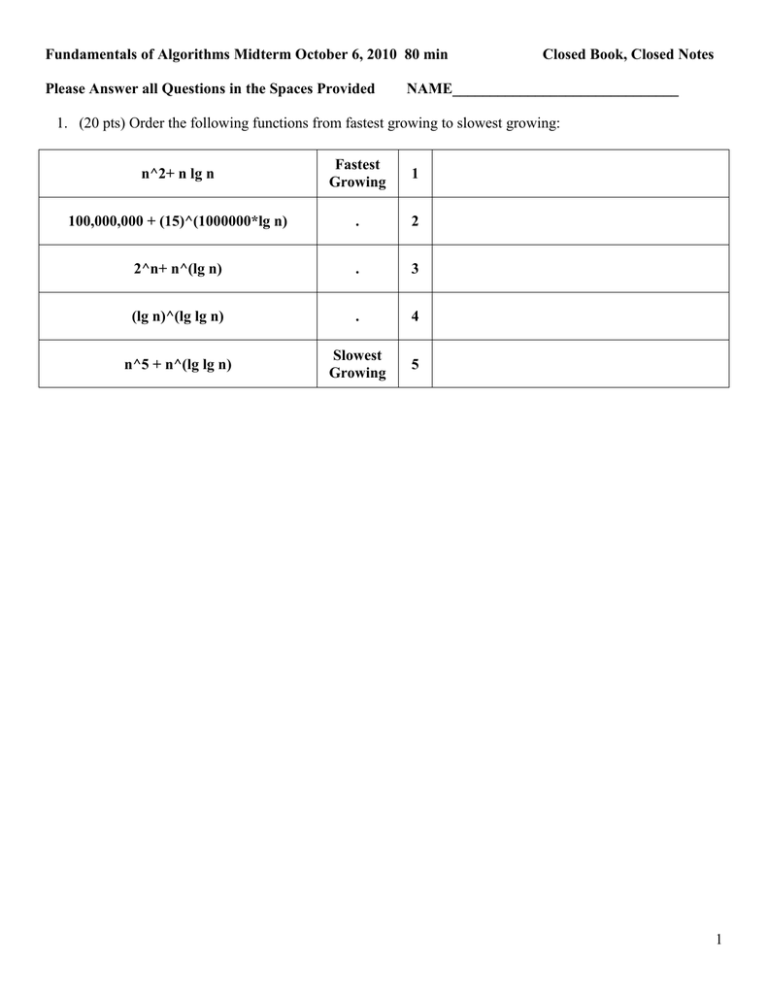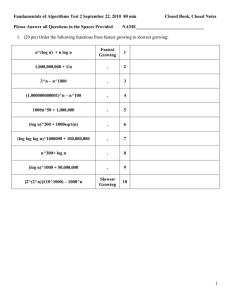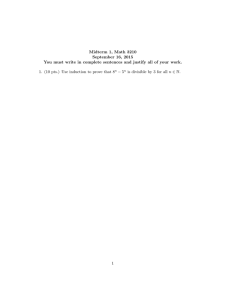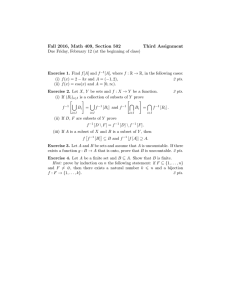Document 16364133
advertisement

Fundamentals of Algorithms Midterm October 6, 2010 80 min
Please Answer all Questions in the Spaces Provided
Closed Book, Closed Notes
NAME______________________________
1. (20 pts) Order the following functions from fastest growing to slowest growing:
n^2+ n lg n
Fastest
Growing
1
100,000,000 + (15)^(1000000*lg n)
.
2
2^n+ n^(lg n)
.
3
(lg n)^(lg lg n)
.
4
n^5 + n^(lg lg n)
Slowest
Growing
5
1
2. (20 pts) Consider the following function
int d(int n){
if(n<=3){
return n;
}else{
return d(n-1) + d(n-2) + d(n-3) + d(n-4);
}
}
Let a(n) be the number of additions done by this program on input n.
(a) Derive a recurrence relation for a(n).
(b) Find a closed form solution for a(n) in term of d(n)
(c) Prove by induction that the formula you found in part (b) is correct.
2
3. (20 pts) Strassen’s algorithm for multiplying two matrices works in a recursive fashion. The running
time T(n) of this algorithm can be characterized by the following recurrence equation:
T(n) = 7T(n/2), T(1)=1
Solve this recurrence equation in terms of n and prove your solution by induction.
3
4. (20 pts) Prove by induction that
F(1)^2 + F(2)^2 + ... + F(n)^2 = F(n)F(n+1)
for all n>=1 and where F(n) is the nth Fibonacci number.
4
5. (20 pts) Use the Longest Common Subsequence Dynamic Programming Algorithm to find the LCS of
ABZ BZAZBAZZA and CDZZCZCZZC.
5
6. (20 pts) Prove by induction that
F(n)[F(n-1) + F(n+1)] = F(2n)
for all n>=1 and where F(n) is the nth Fibonacci number.
6




